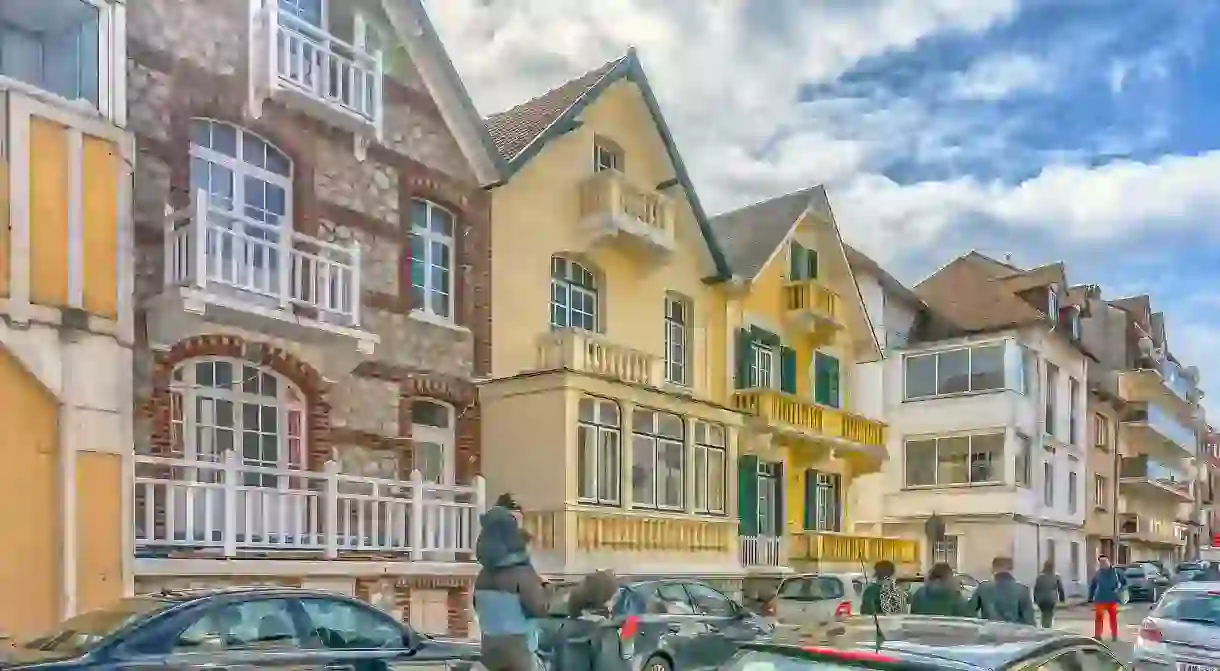A Walking Tour of Le Touquet's Architectural Landmarks

The chic and cheerful resort of Le Touquet has over twenty buildings listed on the Historic Monuments registry – amazing for a town with a population of just over 5000 residents. The majority of these buildings were built in the 1920s, when Le Touquet became established as the resort to see in France.
City Hall
The Hôtel de Ville in Le Touquet is testament to the shared French and British birthright of the elegant beach resort. The blend of Neogothic and Tudor styles is strikingly effective, particularly in the impressive ceremonial salle d’honneur. When it was first conceived as a playground for the smart set in the roaring twenties, Le Touquet was still administratively under the aegis of a neighbouring town. After 1912, the resort became a town in its own right, but the sociopolitical climate prevented a town hall being built. However, in the period after the First World War, building commenced in 1929 with Architect Pierre Drobecq at the helm in collaboration with Atelier Jaussely et Expert. Le Touquet City Hall was inaugurated on June 27, 1931.
Nearby food & drinks: Le Village Suisse (upscale traditional cuisine with a lovely terrace). Abaca (fresh and casual tea house).

The Covered Market
About 300 metres from city hall heading towards the ocean, you’ll find one of the best-loved markets in the north of France. Le marché couvert is the location of the twice-weekly meet, where the farmhouse cheese vendor rubs shoulders with the bespoke jewellery designer. Built in 1927 on the concept of young architect Henry-Léon Bloch, the two wings of the distinctive 84-metre long crescent shape are joined by a central arch featuring a clock.
Nearby food & drinks: À Table ( traditional brasserie). L’Impasse (beer and cocktails, specialising in all things mojito)

The Post Office
Take a good look at the post office building. Does it remind you of a church, perhaps? Formerly the site of a chapel built in 1886, it was a natural meeting point for locals that eventually became the market ground. As Le Touquet grew, the market moved to a larger building, making room for the construction of a new post office. Built in 1927 by Jean Boissel, it echoed the architecture of the old chapel, right down to the belfry adorning the roof.
Nearby food & drinks: Pérard (a local institution, sensational seafood). Le Globetrotter (popular Franc0-British pub and sports bar)

The Lighthouse
The iconic building is located about 800 metres from the post office. Originally there were two lighthouses in Le Touquet, but both were destroyed during the Second World War. A new Phare du Touquet Paris Plage was commissioned by France’s Phares et Balises department to Louis Quétélart, and was inaugurated in 1951. By this time the town had grown around the once isolated spot where the lighthouse stands, so that it has now become part of the landscape of the town centre.
Nearby food & drinks: Le Pavillion (Michelin-starred restaurant overlooking the garden at the Westminster Hotel).La Réserve (elegant wine and champagne bar).

The Racecourse Grandstands
Just under 900 metres from the lighthouse, the elegant Hippodrome draws an international crowd. The grandstands of the racecourse of Le Touquet are a protected monument, a symbol of the golden age of the seaside resort. They were built in 1925, designed by architects Georges-Henry Pingusson and Paul Furiet. Constructed of reinforced concrete, the awnings cover the stands in a single piece – real cutting-edge technology for the time. They were designed in such a way that they not only offer a view of the course itself, but also provide an exceptional panorama of the Canche river estuary beyond.
Nearby food & drinks: La Dune Aux Loups (traditional regional cuisine, set in the forest, opposite the equestrian center). Sea Snack Bar (art déco inspired bar and lounge at the Best Western Grand Hotel)

Villa Saint-Augustin, Thalassa, Phébus et Borée
Heading back to the beach, about 1.9 km from the racecourse, you will come across a number of stunning historic villas, none more remarkable than the Villa Saint-Augustin, Thalassa, Phébus, Borée. The façade and roof are protected as a historic monument as the only surviving example of its kind that is located directly on the seafront. It was built as a family home in 1897 in Marquise stone by architect Ladislas Casiorowski.
Nearby food & drinks: Waikiki Beach (informal beach bar and café popular for its smoothies and slushies). Plage des Pirates (beach bar and café serving cocktails and casual meals)

Check out the map below to plan your route for a tour of Le Touquet’s main architectural landmarks.
https://drive.google.com/open?id=1-eWAMJ-LM5boV71iMmEzLX5pbPM&usp=sharing













